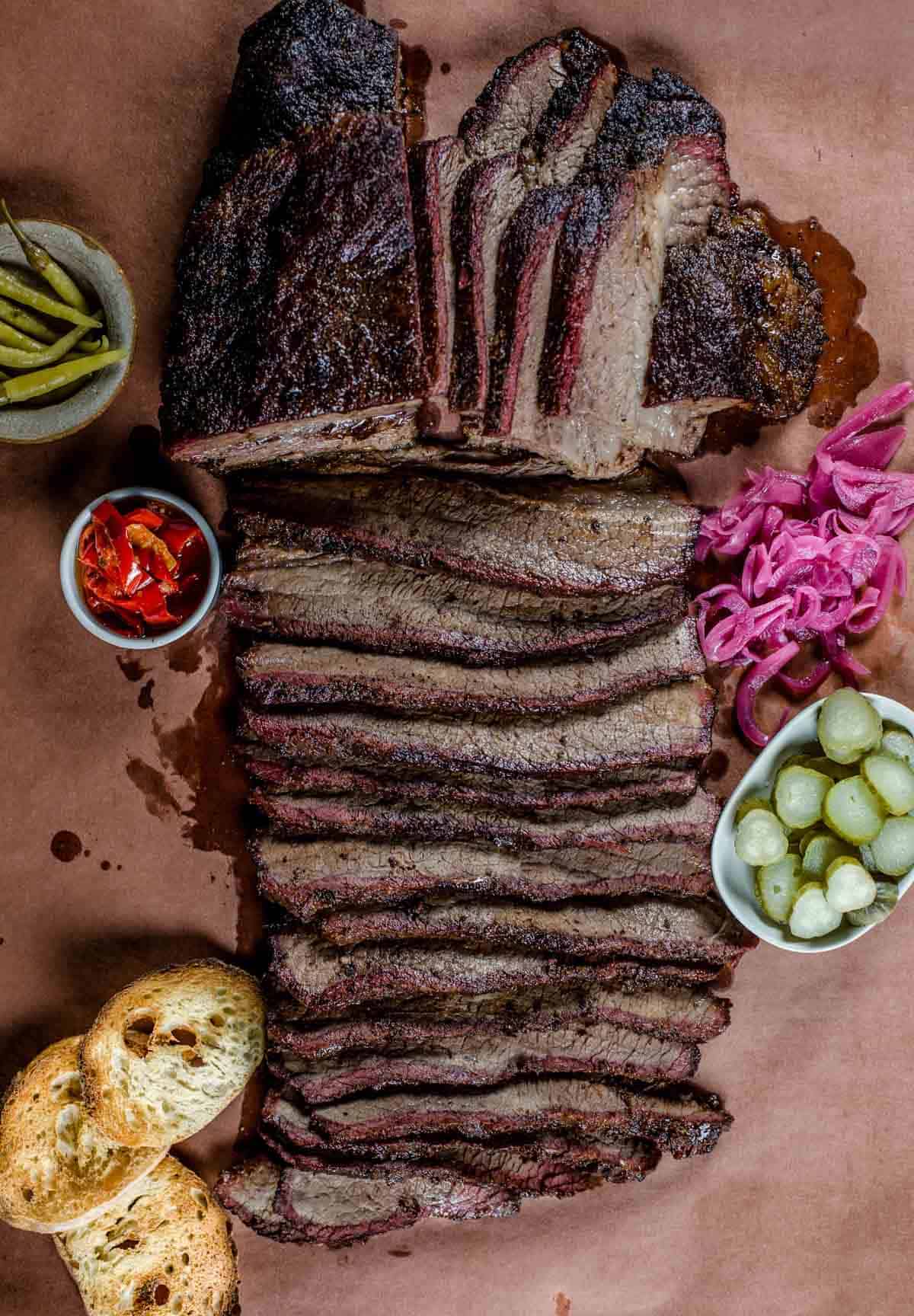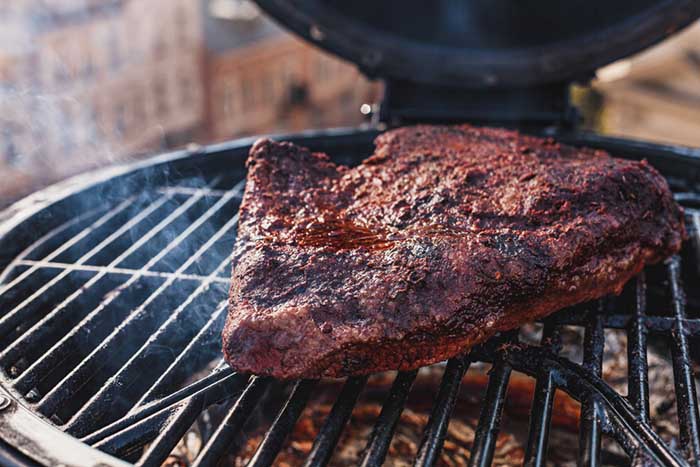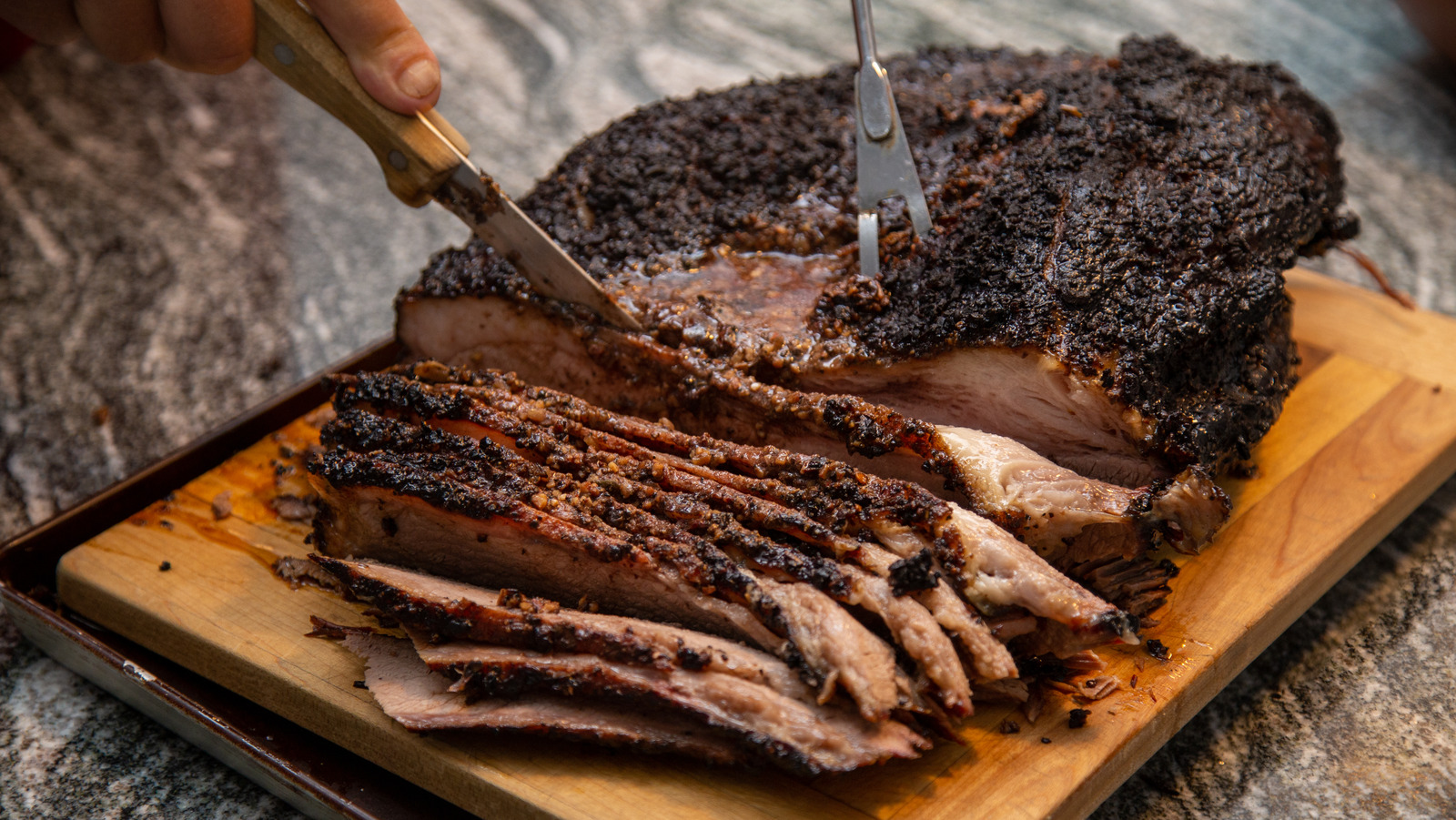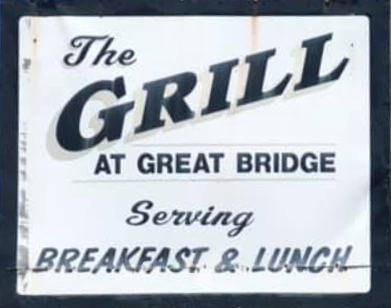
Introduction
Smoking brisket is a popular cooking technique that requires careful attention to temperature and time. The choice between smoking at 180 or 225 degrees Fahrenheit can greatly impact the outcome of the brisket. In this blog post, we will explore the differences between these two temperatures and their effects on the tenderness and juiciness of the brisket.
Understanding The Importance Of Smoking Techniques
Smoking is a slow cooking method that involves exposing meat to low temperatures and the smoke created by burning wood chips or pellets. This process allows for the meat to cook slowly, resulting in tender and flavorful results. However, the temperature at which the meat is smoked can affect the texture and overall experience of the brisket.
Exploring The Differences Between Smoking At 180 Or 225 Degrees Fahrenheit
There are two main temperatures commonly used for smoking brisket: 180 and 225 degrees Fahrenheit. Let’s compare these temperatures and their effects on the final product:
| Temperature | Cooking Time | Tenderness | Juiciness |
|---|---|---|---|
| 180°F | Longer cooking time | More tender | More juicy |
| 225°F | Shorter cooking time | Slightly less tender | Still juicy |
Smoking brisket at 180°F requires additional time compared to smoking at 225°F. The longer cooking time at 180°F allows the connective tissues in the brisket to break down further, resulting in a tender and melt-in-your-mouth texture. Additionally, the lower temperature helps retain more juices, resulting in a moist and flavorful brisket.
On the other hand, smoking brisket at 225°F offers a faster cook time, making it a preferred option for those who are short on time or prefer a slightly less tender brisket. However, the meat will still be juicy and packed with flavor.
It is important to note that personal preference plays a significant role in determining the ideal temperature for smoking brisket. Experimenting with different temperatures can help you find the sweet spot that matches your desired outcome.
In conclusion, whether you choose to smoke brisket at 180 or 225 degrees Fahrenheit depends on your personal preferences and time constraints. Both temperatures can result in a delicious and enjoyable brisket, with slight differences in tenderness and cooking time. Happy smoking!
The Science Of Slow-cooked Smoked Brisket
The Chemical Reactions That Occur During Smoking
When smoking brisket, the combination of heat and smoke creates chemical reactions that enhance the flavor and texture of the meat. As the wood chips or pellets burn, they release smoke particles that contain aromatic compounds such as phenols and carbonyls. These compounds react with the proteins and lipids in the meat, creating new flavor compounds and giving the brisket its characteristic smoky taste.
Effects Of Temperature On Meat Texture And Flavor
The choice of temperature during smoking can have a significant impact on the tenderness and juiciness of the brisket. Let’s take a closer look at the differences between smoking at 180 and 225 degrees Fahrenheit:
- 180°F: Smoking brisket at 180°F requires a longer cooking time. The prolonged exposure to low heat allows the connective tissues in the brisket to break down further, resulting in a tender and melt-in-your-mouth texture. The lower temperature also helps retain more juices, resulting in a moist and flavorful brisket.
- 225°F: Smoking brisket at 225°F offers a shorter cooking time compared to 180°F. While the meat may be slightly less tender, it still retains its juiciness and is packed with flavor. This temperature is a preferred option for those who are short on time or prefer a brisket with a bit more firmness.
It is important to note that the ideal temperature for smoking brisket ultimately depends on personal preference and time constraints. Experimenting with different temperatures can help you find the perfect balance between tenderness and cooking time. Whichever temperature you choose, smoking brisket is a delicious and enjoyable cooking technique that results in a flavorful and satisfying dish.
The Science Of Slow-cooked Smoked Brisket
Smoking Brisket At 180 Degrees Fahrenheit
Advantages And Disadvantages Of Smoking At A Lower Temperature
Smoking brisket at 180 degrees Fahrenheit offers several advantages and disadvantages. Here are some points to consider:
- Advantages:
- A more juicy and tender brisket: The lower cooking temperature allows the connective tissues in the brisket to break down further, resulting in a tender and melt-in-your-mouth texture.
- Retains more juices: The lower temperature helps retain more juices in the meat, resulting in a moist and flavorful brisket.
- Enhanced smoky flavor: The prolonged exposure to low heat allows for more absorption of the smoky flavor into the meat.
- Disadvantages:
- Requires extra cooking time: Smoking brisket at 180 degrees Fahrenheit requires a longer cooking time compared to higher temperatures.
- May be less firm: The meat may have a more delicate texture compared to briskets smoked at higher temperatures.
Tips For Achieving A Tender And Smoky Brisket At 180 Degrees
If you decide to smoke your brisket at 180 degrees Fahrenheit, here are some tips to ensure a tender and smoky result:
- Use the right type of wood: Choose hardwoods like oak, hickory, or mesquite for a strong and traditional smoky flavor.
- Invest in a reliable smoker: Ensure that your smoker maintains a consistent temperature of 180 degrees Fahrenheit throughout the cooking process.
- Allow for sufficient cooking time: Plan for a longer cooking time, as the lower temperature will require more time for the connective tissues to break down and the flavors to develop.
- Baste and wrap the brisket: To prevent drying out, baste the brisket with a flavorful mop sauce or wrap it in foil during the smoking process.
- Rest before slicing: Once the brisket reaches your desired tenderness, allow it to rest for at least 30 minutes before slicing. This allows the juices to redistribute and ensures a moist and flavorful final result.
Remember, the choice of temperature for smoking brisket ultimately comes down to personal preference. Experiment with different temperatures to find the perfect balance between tenderness, juiciness, and cooking time. Whether you choose to smoke your brisket at 180 degrees or a higher temperature, the slow and smoky cooking process will result in a delicious and satisfying dish.

The Science Of Slow-cooked Smoked Brisket
Smoking Brisket At 180 Degrees Fahrenheit
Advantages And Disadvantages Of Smoking At A Lower Temperature
Smoking brisket at 180 degrees Fahrenheit offers several advantages and disadvantages. Here are some points to consider:
- Advantages:
- A more juicy and tender brisket: The lower cooking temperature allows the connective tissues in the brisket to break down further, resulting in a tender and melt-in-your-mouth texture.
- Retains more juices: The lower temperature helps retain more juices in the meat, resulting in a moist and flavorful brisket.
- Enhanced smoky flavor: The prolonged exposure to low heat allows for more absorption of the smoky flavor into the meat.
- Disadvantages:
- Requires extra cooking time: Smoking brisket at 180 degrees Fahrenheit requires a longer cooking time compared to higher temperatures.
- May be less firm: The meat may have a more delicate texture compared to briskets smoked at higher temperatures.
Tips For Achieving A Tender And Smoky Brisket At 180 Degrees
If you decide to smoke your brisket at 180 degrees Fahrenheit, here are some tips to ensure a tender and smoky result:
- Use the right type of wood: Choose hardwoods like oak, hickory, or mesquite for a strong and traditional smoky flavor.
- Invest in a reliable smoker: Ensure that your smoker maintains a consistent temperature of 180 degrees Fahrenheit throughout the cooking process.
- Allow for sufficient cooking time: Plan for a longer cooking time, as the lower temperature will require more time for the connective tissues to break down and the flavors to develop.
- Baste and wrap the brisket: To prevent drying out, baste the brisket with a flavorful mop sauce or wrap it in foil during the smoking process.
- Rest before slicing: Once the brisket reaches your desired tenderness, allow it to rest for at least 30 minutes before slicing. This allows the juices to redistribute and ensures a moist and flavorful final result.
Smoking Brisket At 225 Degrees Fahrenheit
Advantages And Disadvantages Of Smoking At A Higher Temperature
Smoking brisket at 225 degrees Fahrenheit also has its advantages and disadvantages. Here’s what you need to know:
- Advantages:
- Faster cooking time: Smoking at a higher temperature of 225 degrees Fahrenheit will result in a faster cook compared to smoking at 180 degrees Fahrenheit.
- Easier to achieve a firm bark: The higher temperature allows for a more defined and crispy bark on the outside of the brisket.
- Less risk of overcooking: Higher temperatures can reduce the risk of overcooking the brisket, as the higher heat helps to break down the connective tissues more quickly.
- Disadvantages:
- Slightly less tender result: Although the brisket will still be tender, smoking at a higher temperature may result in a slightly less tender texture compared to smoking at 180 degrees Fahrenheit.
- Reduced juiciness: Higher temperatures can cause some of the juices to evaporate more quickly, resulting in a slightly drier brisket.
Tips For Achieving A Juicy And Flavorful Brisket At 225 Degrees
If you choose to smoke your brisket at 225 degrees Fahrenheit, here are some tips to ensure a juicy and flavorful result:
- Choose the right type of wood: Hardwoods like oak, hickory, or fruitwoods work well at this temperature.
- Maintain a consistent temperature: Use a reliable smoker or grill that can maintain a steady temperature of 225 degrees Fahrenheit.
- Use a water pan: Placing a water pan in the smoker can help maintain moisture and prevent the brisket from drying out.
- Wrap in foil: After a few hours of smoking, consider wrapping the brisket in foil to help retain moisture.
- Rest before slicing: Allow the brisket to rest for at least 30 minutes before slicing to lock in the juices.
Remember, personal preference and time constraints play a significant role in deciding whether to smoke brisket at 180 or 225 degrees Fahrenheit. Experiment with both temperatures to find the perfect balance of tenderness, juiciness, and cooking time that suits your taste.
Personal Preference: Choosing The Ideal Temperature
Factors To Consider When Deciding Between 180 And 225 Degrees
The decision to smoke brisket at 180 or 225 degrees Fahrenheit ultimately comes down to personal preference and various factors. Here are some important considerations:
- Cooking Time: Smoking at 180 degrees Fahrenheit will require a longer cooking time compared to smoking at 225 degrees Fahrenheit. If you’re time-conscious, smoking at 225 degrees may be more suitable.
- Texture: Brisket smoked at 180 degrees Fahrenheit tends to have a more delicate texture, while smoking at 225 degrees Fahrenheit can result in a slightly firmer bark on the outside of the brisket.
- Taste: Smoking at 180 degrees Fahrenheit allows for enhanced absorption of the smoky flavor into the meat, while higher temperatures may result in a slightly different flavor profile.
Understanding How Temperature Affects The Level Of Smokiness
The temperature at which you smoke your brisket can significantly impact the level of smokiness. Here’s a breakdown:
| Temperature | Smokiness Level |
|---|---|
| 180 degrees Fahrenheit | Enhanced smoky flavor due to prolonged exposure to low heat. |
| 225 degrees Fahrenheit | Still offers a good smoky flavor, but may be slightly less intense compared to 180 degrees. |
Remember, the ideal temperature for smoking brisket ultimately depends on your personal preferences and the specific outcome you desire. Whether you prioritize tenderness, smokiness, or cooking time, it’s essential to experiment with both temperatures to find the perfect balance that suits your taste.
Expert Techniques For Smoking Brisket At 180 Or 225 Degrees
Proper Techniques For Preparing The Brisket Before Smoking
Before smoking your brisket, it’s important to properly prepare it to ensure optimal flavor and tenderness. Here are some expert techniques:
- Trimming: Trim excess fat from the brisket, leaving about 1/4 inch of fat to help keep the meat moist during the smoking process.
- Seasoning: Apply a rub of your choice to enhance the flavor of the brisket. Common seasonings include salt, pepper, garlic powder, and paprika.
- Resting: Allow the seasoned brisket to rest at room temperature for about 1 hour before smoking. This helps the flavors penetrate the meat.
Monitoring And Maintaining Temperature During The Smoking Process
Regardless of whether you choose to smoke your brisket at 180 or 225 degrees Fahrenheit, it’s crucial to closely monitor and maintain the temperature. Here are some tips:
- Use a quality smoker thermometer to accurately measure the temperature inside the smoker.
- Keep the smoker’s vents open to ensure proper airflow and maintain a consistent temperature.
- Consider using a water pan in the smoker to help regulate the temperature and maintain moisture in the meat.
- Avoid opening the smoker unnecessarily to prevent heat loss and fluctuations in temperature.
By following these techniques, you can achieve perfectly smoked brisket whether you choose to smoke at 180 or 225 degrees Fahrenheit.

Expert Techniques For Smoking Brisket At 180 Or 225 Degrees
Proper Techniques For Preparing The Brisket Before Smoking
Before smoking the brisket, it is important to properly prepare it to ensure optimal flavor and tenderness. Here are some expert techniques:
- Trimming: Trim excess fat from the brisket, leaving about 1/4 inch of fat to help keep the meat moist during the smoking process.
- Seasoning: Apply a rub of your choice to enhance the flavor of the brisket. Common seasonings include salt, pepper, garlic powder, and paprika.
- Resting: Allow the seasoned brisket to rest at room temperature for about 1 hour before smoking. This helps the flavors penetrate the meat.
Monitoring And Maintaining Temperature During The Smoking Process
Regardless of whether you choose to smoke your brisket at 180 or 225 degrees Fahrenheit, it is crucial to closely monitor and maintain the temperature. Here are some tips:
- Use a quality smoker thermometer to accurately measure the temperature inside the smoker.
- Keep the smoker’s vents open to ensure proper airflow and maintain a consistent temperature.
- Consider using a water pan in the smoker to help regulate the temperature and maintain moisture in the meat.
- Avoid opening the smoker unnecessarily to prevent heat loss and fluctuations in temperature.
By following these techniques, you can achieve perfectly smoked brisket whether you choose to smoke at 180 or 225 degrees Fahrenheit.
Flavor Enhancements: Wood Choices And Seasonings
Exploring Different Types Of Wood For Smoking
Selecting the right wood is crucial for creating the perfect smoked brisket flavor. Here are some different types of wood you can use:
| Wood Type | Flavor Profile |
|---|---|
| Hickory | Strong, smoky, bacon-like |
| Mesquite | Bold, earthy, slightly sweet |
| Oak | Subtle, smoky, medium-bodied |
| Cherry | Sweet, fruity, mild |
| Apple | Sweet, fruity, light |
| Pecan | Rich, nutty, milder than hickory |
Experimenting with different wood types can help you achieve the flavor profile that suits your taste preferences.
Best Seasonings And Rubs To Enhance The Flavor Of The Brisket
When it comes to seasoning your brisket, it is important to choose the right flavors that enhance rather than overpower the meat. Here are some popular seasonings and rubs:
- Salt and pepper: A classic combination that enhances the natural flavors of the brisket.
- Garlic powder: Adds a savory and aromatic element to the brisket.
- Paprika: Gives the brisket a rich, smoky flavor and adds a nice reddish color to the outer crust.
Feel free to experiment with other seasonings and rubs to create a flavor profile that suits your taste buds. Remember to apply the seasoning generously but not excessively to avoid overpowering the meat.
With the right wood choices and seasonings, you can elevate the flavor of your smoked brisket and create a truly mouth-watering experience.
Dealing With Common Challenges
Common Issues Faced When Smoking Brisket At Different Temperatures
- Dry Brisket: Smoking brisket at higher temperatures, such as 225 degrees Fahrenheit, can lead to a drier final product compared to smoking at 180 degrees. This is because the higher heat can cause the meat to cook faster, resulting in less time for the collagen to break down and become tender.
- Longer Cook Time: Smoking brisket at 180 degrees Fahrenheit requires more time compared to cooking at 225 degrees. This can be a challenge if you’re short on time or have limited patience.
- Difficulty in Maintaining Temperature: Keeping the smoker at a consistent temperature can be more challenging when smoking at lower temperatures, such as 180 degrees Fahrenheit. Fluctuations in temperature can affect the overall cooking process and result in an unevenly cooked brisket.
Troubleshooting Tips And Solutions
- Dry Brisket: If you find that your brisket is drying out when smoking at higher temperatures, consider wrapping it in foil or butcher paper during the cooking process. This technique, known as the Texas Crutch, can help retain moisture and prevent the brisket from drying out.
- Longer Cook Time: If you’re looking to shorten the cooking time when smoking at 180 degrees Fahrenheit, consider increasing the heat slightly to around 200-210 degrees. This can help speed up the cooking process without compromising too much on tenderness.
- Difficulty in Maintaining Temperature: To maintain a consistent temperature when smoking at lower temperatures, make sure to properly seal your smoker and minimize the number of times you open it during the cooking process. Additionally, using an insulated or electronically-controlled smoker can help regulate the temperature more effectively.
By being aware of these common challenges and implementing the appropriate troubleshooting tips, you can overcome any obstacles that may arise while smoking brisket at different temperatures. Remember, practice and experimentation are key to finding the perfect temperature and technique that yields the best results for your desired outcome.
Conclusion
Wrapping Up The Discussion On Smoking Brisket At 180 Or 225 Degrees
In conclusion, the decision to smoke brisket at 180 or 225 degrees Fahrenheit depends on personal preference and time constraints. Smoking at 225°F allows for a faster cook with a slightly less tender result, while smoking at 180°F yields a more juicy and tender brisket that requires extra time. It is important to take these factors into consideration and experiment to find the temperature that works best for your desired outcome.
Key Takeaways And Final Recommendations
- Smoking brisket at higher temperatures, such as 225 degrees Fahrenheit, can result in a drier final product compared to smoking at 180 degrees. Wrapping the brisket in foil or butcher paper during the cooking process can help retain moisture.
- Smoking at 180 degrees Fahrenheit requires a longer cooking time. If you’re short on time, consider increasing the heat slightly to around 200-210 degrees to speed up the process without compromising too much on tenderness.
- Keeping the smoker at a consistent temperature can be more challenging when smoking at lower temperatures. Properly sealing the smoker and minimizing the number of times you open it during the cooking process can help maintain temperature stability.
- Practice and experimentation are key to finding the perfect temperature and technique that yields the best results for your desired outcome.
Remember, smoking brisket is a skill that takes time and practice to master. It’s important to be patient and not get discouraged by any challenges you may face along the way. By following these recommendations and continuously refining your technique, you’ll be able to achieve delicious and tender smoked brisket every time.
Frequently Asked Questions About Smoking Brisket at 180 or 225 Degrees: Exploring Different Smoking Techniques
Q: What is smoking brisket?
A: Smoking brisket is a cooking technique that involves slow-cooking a beef brisket over low, indirect heat, commonly using wood smoke for flavor. This process tenderizes the tough cut of meat and infuses it with a rich, smoky flavor.
Q: What is the difference between smoking brisket at 180 and 225 degrees?
A: The main difference lies in the cooking temperature. Smoking brisket at 180 degrees Fahrenheit will result in a slower cooking process, while smoking at 225 degrees Fahrenheit will be slightly faster. The choice of temperature depends on personal preferences and available time.
Q: Is there a significant taste difference between smoking at 180 and 225 degrees?
A: Both methods produce delicious results, but there can be subtle differences in flavor and tenderness. When smoking at 180 degrees, the meat may take longer to cook, resulting in a more fall-apart tender texture. Smoking at 225 degrees may yield slightly firmer yet still tender, slices of meat.
Q: How long does it take to smoke brisket at 180 degrees?
A: Smoking brisket at 180 degrees will require a longer cooking time. As a general guideline, plan for approximately 1.5 to 2 hours per pound of meat. For example, a 10-pound brisket may take around 15 to 20 hours to cook at 180 degrees.
Q: How long does it take to smoke brisket at 225 degrees?
A: Smoking brisket at 225 degrees Fahrenheit will still provide great results, typically requiring around 1 to 1.5 hours per pound of meat. Using this estimate, a 10-pound brisket should take approximately 10 to 15 hours to cook at 225 degrees.
Q: Can I smoke brisket at a higher temperature for faster cooking?
A: While it is possible to smoke brisket at higher temperatures to reduce cooking time, it may result in a less tender and flavorful end product. The slow, low-temperature cooking allows for the breakdown of collagen in the meat, resulting in a more tender and juicy outcome.
Q: What type of wood or smoke flavor should I use for smoking brisket?
A: Popular wood choices for smoking brisket include hickory, oak, mesquite, and fruit woods like apple or cherry. Each wood imparts a unique flavor profile, so choose based on personal taste preferences. Remember to use hardwoods and avoid softwoods or woods treated with chemicals.
Q: Can I start smoking at one temperature and then switch to another?
A: Yes, you can start smoking brisket at one temperature and then adjust it later if needed. For example, some pitmasters prefer to start at a lower temperature, such as 180 degrees, to allow for more smoke absorption, and then increase the heat to 225 degrees for faster cooking.
Q: How do I know when my brisket is done?
A: The best way to determine if your brisket is done is by measuring its internal temperature with a meat thermometer. For tender, yet sliceable brisket, aim for an internal temperature of around 195 to 205 degrees Fahrenheit. Additionally, the meat should feel tender when probed with a toothpick or fork.
Q: Should I rest the brisket after smoking?
A: Absolutely! Resting the cooked brisket is crucial to allow the juices to redistribute and flavors to meld. Wrap the brisket in foil, place it in a cooler, and let it rest for at least 1 hour, or up to 4 hours, before slicing. This resting period will result in a more moist and flavorful brisket.
In conclusion, smoking brisket at 180 or 225 degrees both offer satisfying results when it comes to flavor and tenderness. It’s ultimately a matter of personal preference, available cooking time, and desired texture. Enjoy the process of experimenting with different smoking techniques to discover your perfect brisket flavor.

Keep up with weekly specials through Facebook under “The Grill at Great Bridge.”